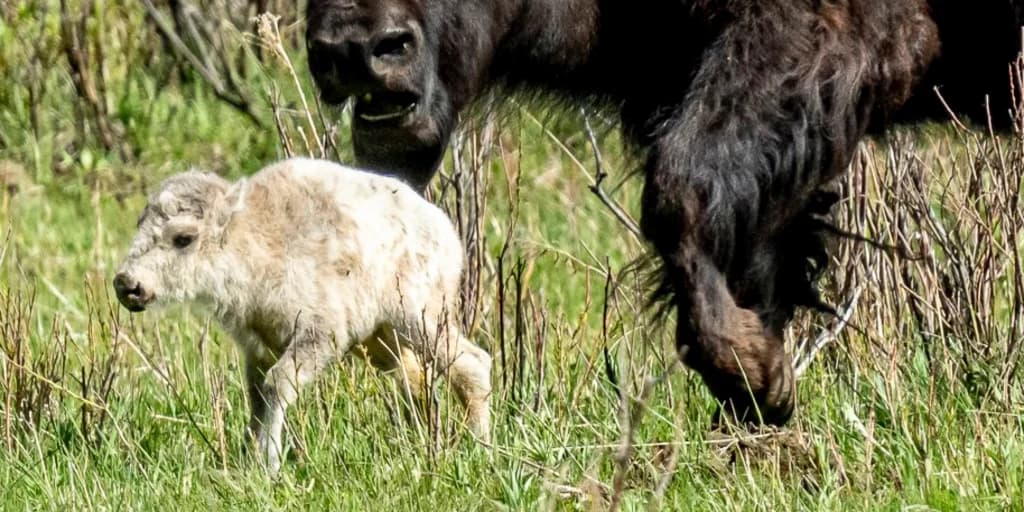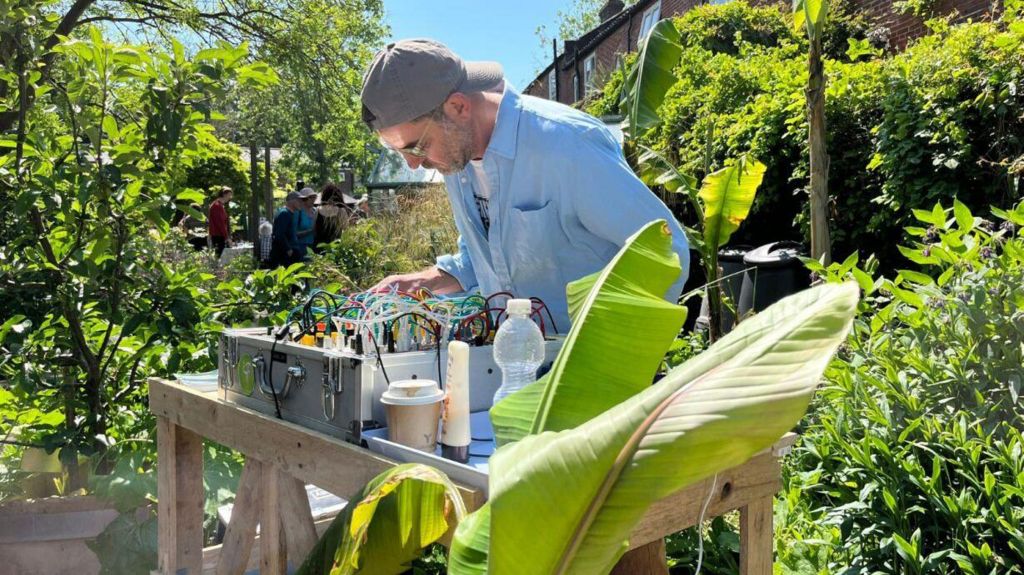
Culture
Internment Camp Made Into a National Park for History
While the Nazis became notorious for the atrocities they committed during World War II, they were not the only country that rounded people up because of their heritage and put them in camps during the War. The U.S. infamously did the same with Japanese American citizens and residents who were, for all intents and purposes, regular Americans with homes, jobs and lives. They were packed up at threat of arrest, relocated, and lived in internment camps for years while their property and homes were taken and given to others in their communities.
Since those days more than 80 years ago, local students in Colorado have been dedicated to helping with the preservation of a local camp in their area. That effort is now going to pay off. The U.S. federal National Park Service has designated the Amache Internment Camp as the next national park, which comes with all the protection and preservation authority for the Camp that one would find at Yosemite, for example.
The designation effort is part of the National Park Service’s dedication to helping preserve American history, both the highlights as well as the low points. However, prior to the federal government stepping in, the hard work and elbow grease was managed for years by the local school district, student volunteers and one primary person as manager, John Hopper.
Hopper had been very familiar with internment camp history. With a background in social studies teaching, Hopper at some point in 1993 found himself translating a guest speaking event for students into something bigger. The idea went from an internment camp survivor’s speech into an effort of action and community service, helping preserve a local camp site for future history and consideration. Hopper helped lead the effort to grow a preservation society, and students were brought in to help with the tremendous amount of legwork basic repair and cleaning so often take. This went on for 30 plus years.
It took another 15 years before the Amache Camp was formally identified as a historic landmark, the first step required before a site becomes something bigger in the federal camp system. It then took another 16 years before the location was declared a national park in 2022 by President Biden. The announcement formally retitled the entire camp property from the local jurisdiction of Granada City to the National Park Service.
Hopper himself has gone through changes as well. Today, he is the dean of his school, but he still makes sure students are involved, volunteering and helping with the maintenance of the Camp. It’s a town’s legacy now with generations having worked there to preserve history. The locals even help with archaeology digs on the site run by the University of Denver. The effort is a lifelong dedication, but more importantly, Amache Internment Camp is a reminder of how fragile people’s rights are, particularly in a democracy.
Culture
Longtime Friends Relive Woodstock After 55 Years with a Touch of Glamping

In 1969, Beverly “Cookie” Grant hitchhiked to the Woodstock music festival without a ticket and slept on straw. Ellen Shelburne arrived in a VW microbus and pitched a pup tent.
Now, 55 years later, the two longtime friends returned to the famous site in upstate New York, but this time in style. The women, now 76, enjoyed a luxurious two-bedroom glamping tent with comfy beds, a shower, a coffee maker, and Wi-Fi. Unlike their first visit, there was no mud from drenching rains, and they had pavilion seats to watch shows by Woodstock veterans John Fogerty and Roger Daltrey.
“We’re like hippie queens!” Grant joked over breakfast during the trip earlier this month.
The Bethel Woods Center for the Arts, which runs the site, treated Grant and Shelburne to this special stay to promote its new glamping facilities. They also explored Shelburne’s collection of photos from the original festival held August 15-18, 1969.
The once-trampled hillside by the main stage is now a manicured green space near a Woodstock and ’60s-themed museum and concert pavilion. However, the return visit still brought back a flood of memories. Shelburne retraced her steps from when she was a 21-year-old college student, guided by the photos taken by her then-boyfriend and future husband, David Shelburne.
“I’m looking at this person in the photograph, who is me, but a person just starting out in life at that age. And now I’m looking back at sort of bookends of my life,” Ellen Shelburne said. “All these decades later, I’m back at Woodstock and it just brings it all up in such a positive way.”
Grant and Shelburne did not know each other in August 1969 and attended the concert separately. Shelburne came from Columbus, Ohio, with David Shelburne, his best friend, and another woman. They arrived early, bought ponchos after rain was forecast, and she slept in a pup tent.
“I was never cold, wet, hungry, muddy, dirty, uncomfortable, or miserable,” she said. “It was the total opposite.”
Grant went to Woodstock on a whim. A long-haired surfer named Ray invited her and a friend to hitchhike to New York for the festival. Her friend dropped out along the way, but she and the surfer made it to Bethel. The last driver dropped them off at the edge of the epic traffic jam outside the festival and gave them a blanket. Grant walked the last several miles to Woodstock barefoot.
Both women were amazed by Jimi Hendrix, The Who, and other musical acts, but also by the good vibes from the 400,000 or more people who converged on Max Yasgur’s dairy farm.
“If we needed food, someone gave us food. Someone gave us water. We needed nothing,” Grant said.
The two women met months later in Columbus, where they each ran shops near Ohio State University with the men they went to Woodstock with. Both married their concert companions, though Grant got divorced several years later. David and Ellen Shelburne ran a film and video production company together until he died four years ago. Grant moved to Florida and became a chef on mega-yachts before starting her own business providing crews for those big boats.
Each woman kept a spark of the Woodstock spirit. Shelburne said she’s “stuck in the ’60s and proud of it.” They got the idea to return to the festival site last year after sharing oral histories in Columbus for the Museum at Bethel Woods.
This time, during their long weekend of peace, love, and nostalgia, they stayed in a “Luxury 2 Bedroom Safari Tent” with a front deck and bathroom. When it rained, they stayed dry in the museum.
On a sunny Saturday, Bethel Woods senior curator Neal Hitch drove the women around in a golf cart to explore the spots where David Shelburne took his festival photos. Unlike others who focused their cameras on the stage, he documented festivalgoers camping, swimming, selling goods, relaxing, and having fun. Hitch noted that David Shelburne’s images are valuable because they are in sequence, telling a story.
At one stop, Shelburne stood by a tree line, holding a photo of a field full of campers. She was standing where her late husband took the photograph, looking at the same field, minus the campers, 55 years later. Visibly moved, she said “oh” a few times and let out a deep breath before exclaiming, “Wow!”
It broke her heart that her husband is not in the photographs, but she felt his presence that weekend.
The women explored the festival site over several days, from the stage area to the woods where vendors had set up stalls. Despite the changes—the luxury tents, the fences, the museum—they recognized the same mellow, friendly vibes they experienced as 21-year-olds. And they were thrilled to immerse themselves in it again decades later.
“It’s very wonderful to see that it’s in history forever,” Grant said, “and we’re a part of that.”
Culture
Decades Later, Wheatfield Sprouts Again: A Pioneering Artist’s Enduring Legacy

Agnes Denes, a renowned ecological artist, has returned to the concept that first catapulted her into the spotlight: a wheat field. Four decades after her now-iconic 1982 project in Battery Park City, Denes has planted a new field in Bozeman, Montana, titled “Wheatfield – An Inspiration.”
The original “Wheatfield” was a bold act of defiance. Nestled amidst the skyscrapers of Manhattan, it challenged societal priorities and sparked conversations about land use and human impact on the environment, long before climate change became a mainstream concern.
This new iteration, however, carries a different message. Partnering with the Bozeman arts organization Tinworks, Denes aims to foster a sense of community through the shared experience of growing and harvesting wheat. Locals, students, and small businesses have all contributed to the project, fostering a connection to the land and the food it produces.
The Montana wheat field isn’t just a symbolic gesture; it’s a practical one too. The harvested grain will be milled into flour and used by local bakeries, with some even reaching food banks. This addresses the growing concerns of food insecurity and sustainability, particularly relevant in the face of climate change.
Denes’ artistic vision extends far beyond aesthetics. Throughout her career, she has consistently strived to “unite the human intellect with the majesty of nature,” as she phrased it. Her projects are often large-scale and complex, like “Tree Mountain” in Finland, a spiraling forest embodying her fascination with mathematics and nature’s intricate patterns.
Many of Denes’ ideas remain unrealized, existing only as proposals or models in her vast collection, “The Human Argument.” These concepts range from burying time capsules in glaciers for future civilizations to discover, to creating a silent aircraft to study bird migration patterns.
Despite her prolificacy, Denes acknowledges the limitations on bringing her ambitious visions to life. “People know me…on three or four projects,” she reflects. “Can you imagine if I could have realized 20 or 30?”
Yet, Denes’ artistic influence is undeniable. Seeds, a recurring motif in her work, hold particular significance. Her very first performance piece involved planting rice to symbolize life, a powerful exploration of interconnectedness.
“Wheatfield – An Inspiration” embodies this same spirit. Denes hopes to subtly shift perspectives, to inspire change through engagement and personal connection. “There’s a lot of political art going on — useless, aggravating,” she asserts. “I want to change people in the most subtle way possible.”
At 93, Denes continues to push boundaries and plant seeds, both literal and metaphorical. Her work, a testament to the enduring power of art to connect humanity with nature, leaves a lasting legacy that will continue to inspire for generations to come.
Culture
Rare White Buffalo Calf’s Birth in Yellowstone Sparks Hope and Reflection

In a rare and profound event, the birth of a white buffalo calf in Yellowstone National Park has brought a sense of fulfillment to a Lakota prophecy, symbolizing hope and a call to action for the protection of our planet.
Chief Arvol Looking Horse, spiritual leader of the Lakota, Dakota, and Nakota Oyate, emphasized the dual significance of the calf’s birth. “The birth of this calf is both a blessing and warning. We must do more,” he stated. This sentiment reflects the deeper connection between the Lakota people and the natural world, and their ongoing efforts to safeguard the earth and its inhabitants.
The calf was born on June 4 in the Lamar Valley, spotted by Erin Braaten of Kalispell. While visiting the park with her family, Braaten noticed “something really white” among a herd of bison. Using her telephoto lens, she was astonished to discover a white bison calf. “I look and it’s this white bison calf. And I was just totally, totally floored,” she recalled. The Braaten family observed the calf and its mother for nearly an hour before they moved into the willows, and despite returning over the next two days, Erin did not see the calf again.
For the Lakota, the birth of a white buffalo calf with specific features—black nose, eyes, and hooves—is a momentous event, comparable to the second coming of Jesus Christ. According to Lakota legend, White Buffalo Calf Woman appeared about 2,000 years ago during a time of hardship, teaching the tribe to pray and use a sacred pipe to call the buffalo. As she departed, she transformed into a white buffalo calf, promising to return during hard times.
This prophecy appears to be echoed in the recent birth, similar to the 1994 birth of a white buffalo named Miracle in Wisconsin. Troy Heinert, executive director of the InterTribal Buffalo Council, confirmed the calf in Braaten’s photos possesses the necessary traits of a true white buffalo. Unlike albino buffalo, which have pink eyes, this calf has dark eyes, a black nose, and black hooves.
While a naming ceremony for the calf has taken place, the name remains undisclosed. A celebration of its birth is planned for June 26 at the Buffalo Field Campaign headquarters in West Yellowstone.
White buffalo hold sacred significance for many tribes, each with their own stories underscoring the animal’s importance. Heinert and members of the Buffalo Field Campaign have never heard of a white buffalo being born in Yellowstone, which hosts wild herds. Park officials have yet to confirm the birth or document any previous occurrences of a white buffalo in the park.
Jim Matheson, executive director of the National Bison Association, noted the rarity of white buffalo is difficult to quantify, as no historical tracking exists for their births. Currently, about 80 tribes across the U.S. oversee over 20,000 bison, a number that continues to grow.
The birth comes at a time when the management of Yellowstone’s bison herds is under scrutiny. Annually, thousands of bison are culled to maintain the park’s population around 5,000, though proposals suggest increasing this limit to 6,000. However, Montana ranchers and Republican Gov. Greg Gianforte oppose raising the herd size, preferring a target of 3,000.
Heinert views the calf’s birth as a poignant reminder of our responsibilities. “I hope that calf is safe and gonna live its best life in Yellowstone National Park, exactly where it was designed to be,” he expressed. The rare appearance of this sacred animal calls for a renewed commitment to living harmoniously and respecting all beings.
Culture
Gardener Brings Plant Music to New Audiences

A gardener who created a synthesizer to make music from plants is now taking his unique performances to new live audiences.
Martin Noble-James, a gardener at Felbrigg Hall near Cromer, Norfolk, will be performing music using plants in a technique called bio-sonification.
This process involves attaching electrodes to plants to pick up their electrical impulses and turning those impulses into sound.
“I’m interested in making music where I don’t have control,” he said. “It’s like collaborating with something that doesn’t know it’s making art and sharing it with a live audience.”
Mr. Noble-James, who has been a gardener at Felbrigg Hall for the past 20 years, started exploring bio-sonification during the Covid-19 lockdown.
Bio-sonification works by attaching electrodes to plants to pick up their electrical signals, which are then fed into the synthesizer to create music.
“I really wanted to do it live,” he said. “Just get out there, plug a plant in, and see what happens.”
He explained that making changes to the plant, like tearing off a leaf or watering it, can change the sound it makes because the chemical processes inside the plant are altered.
“The plants are just producing voltage, and you can do all sorts of things with that voltage,” he said.
This summer, Mr. Noble-James will travel around Norfolk, bringing his plant music to audiences at Felbrigg Hall and the Blickling Estate.
Culture
Flavor Flav Boosts U.S. Women’s Water Polo Team as Official Hype Man

Flavor Flav, the iconic rapper known for his vibrant personality and clock necklace, has taken on a new role as the official hype man for the U.S. women’s water polo team. The team is gearing up for an ambitious run at their fourth consecutive gold medal at the upcoming Paris Olympics.
Maggie Steffens, a veteran player, expressed her excitement on social media. “There is no greater honor than representing Team USA on the Olympic stage side by side with strong, talented & driven women who empower you every day,” she wrote. Steffens also encouraged more people to support women’s sports, particularly water polo, which she feels deserves more recognition.
At 65 years old, Flavor Flav is stepping up not just with his energetic support but also with financial backing. “As a girl dad and supporter of all women’s sports – imma personally sponsor you my girl,,, whatever you need,” he commented on Steffens’ Instagram post. He promised to sponsor the whole team, assuring them, “That’s a FLAVOR FLAV promise.”
Flavor Flav, whose real name is William Jonathan Drayton Jr., is finalizing a sponsorship deal with USA Water Polo. He’s already actively promoting the team on social media and plans to cheer them on from the stands in Paris. “When I come out and watch this water polo team … ‘USA! USA!’ Yo, I’m going to be the biggest hype man that they ever had in their life,” Flav told the Associated Press.
The rapper, a father to four daughters, emphasized his commitment to supporting women in an interview with PEOPLE magazine. “There’s a lot of women, I’m saying that all they want is just a chance,” he said, expressing his desire to help women achieve their dreams.
The team’s reaction to Flavor Flav’s involvement has been one of shock and excitement. “Is this real, this reality?” Steffens said, amazed at the attention from such a famous figure. She described water polo as not just a passion but her life, and Flav’s support as a significant boost.
The U.S. women’s water polo team has been highly successful since the 2012 Olympics but has struggled to gain the same level of attention as other American teams. Steffens, the last remaining member from the 2012 squad, highlighted the ongoing financial challenges Olympic athletes face and how much this new partnership could help.
With Flavor Flav’s infectious enthusiasm and backing, the U.S. women’s water polo team hopes to capture not only another gold medal but also the hearts of more fans worldwide.
-

 OMG6 years ago
OMG6 years agoA Couple Gave Birth to the Most Beautiful Twins Ever
-

 OMG6 years ago
OMG6 years ago20 Rare Historical Photos
-

 OMG6 years ago
OMG6 years agoHilarious Airport Photos
-

 Cute6 years ago
Cute6 years agoMom Refuses to Let Daughter Eat Sugar and Years Later This is What She Grows Into
-

 OMG6 years ago
OMG6 years agoTop Secret Air Force One Facts That You Never Knew
-
OMG6 years ago
The Funniest Yearbook Photos Of All Time
-

 OMG6 years ago
OMG6 years agoRetired Mathematician Restores Log Cabin
-

 OMG5 years ago
OMG5 years agoWhat Happened When This ‘Duck Dynasty’ Legend Chopped Off His Beard?